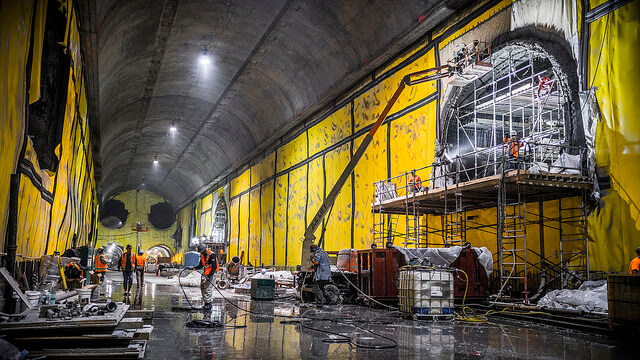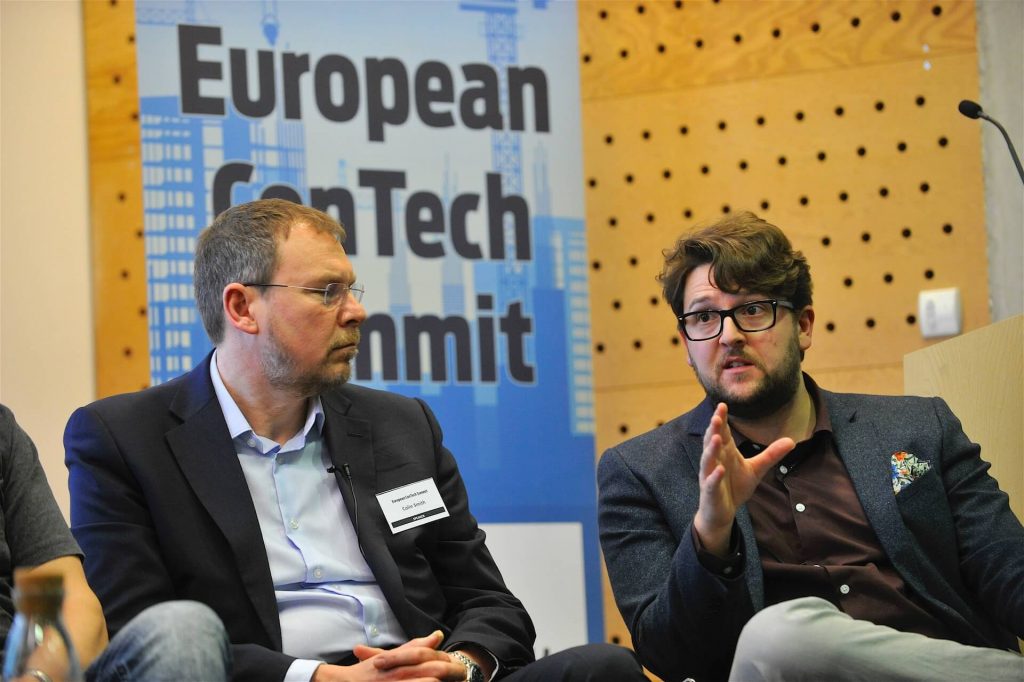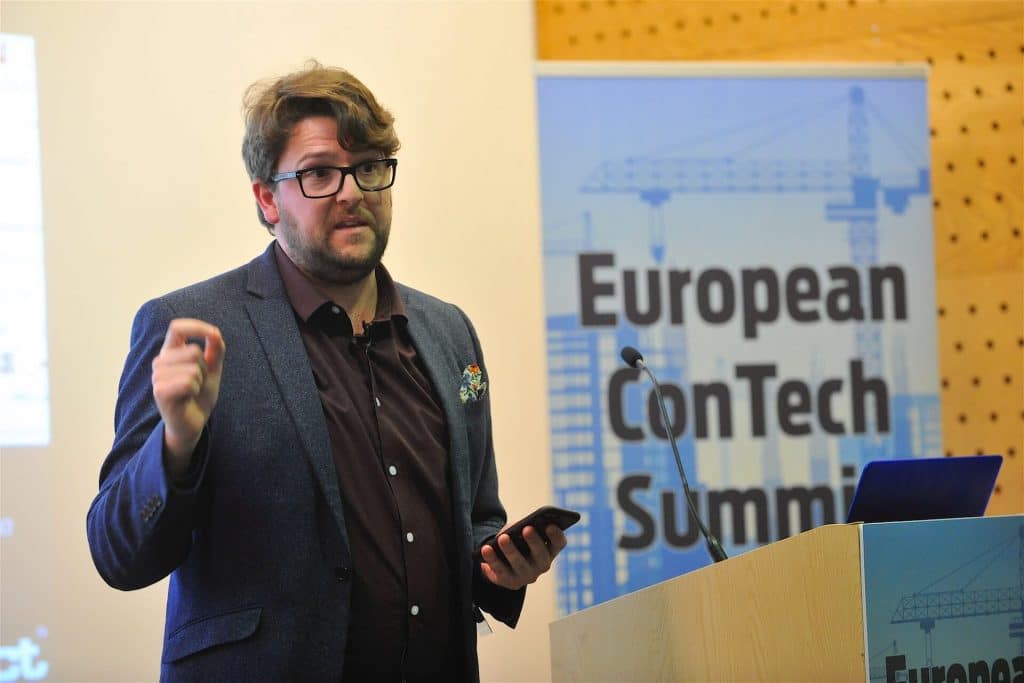The data ecosystem revolution
‘Welcome to Ecosystem revolution.
Welcome to Total Cost of Ownership.
Welcome to the Single Source of Truth!’
This is how Matthew Jackson, Global Manager of the Hercules Platform at BIMobject, concluded his talk during the European ConTech Summit 2018. The Summit took place in London on January 30th and attracted some of the brightest innovators in construction.
According to Matthew Jackson, the future of the building sector lies in collaboration and data is the fuel which will lead to this remarkable shift.
‘It is the death of the enterprise and the birth of the ecosystem. A small independent business that tries to specialize on something is better than a bigger company that tries to do everything themselves. Just imagine of companies being the best on what they can be at and working together to produce an enterprise level solution through ecosystems’.
Construction is no longer interested in big players that consume everything. To the contrary, the industry needs services and teams that are highly specialized and which can contribute to a broader and well-articulated ecosystem.
Data is the glue that can keep all these different parts of the ecosystem together. As Mr. Jackson smartly mentioned:
‘There is no doubt that data is the new oil. Information is power and people who hold these databases and know how to use them will take the industry by storm!’
On top of that, data is an objective force, a single source of truth, which can keep clients satisfied and allow them to monitor the construction process in a smarter and more effective manner.
Such an approach provides the sector with the great opportunity to substantiate a strategic shift. It’s time for construction to stop building in cost and start building in value.
The collection and in-depth analysis of data is the next step on this long journey of digitisation in construction. Matthew Jackson is convinced that this will be a real game-changer for the building sector:
‘By examining the data, you can ran a TCO (Total Cost of Ownership). This is a buzz-term that will definitely start being heard more and more during the next years’.
Why a TCO matters
As it was explained above, TCO stands for Total Cost of Ownership and it could be described as a projection of the potential direct and indirect expenses of a service or product. This financial estimation is remarkably helpful for the whole construction supply chain, as it will enable the calculation of a construction project’s total cost across its full life-cycle.
Cost estimates is one of the biggest pains for the building sector. A drastic shift is needed the soonest possible.
‘At the moment, for every pound we spend on design, we spend 10 fold on construction and 100 fold on managing a facility’, says the Global Manager of the Hercules Platform at BIMobject.
And that’s something that has to change. In that way, it will be possible for the industry and the clients to control and manage project resources in a more straightforward and effective manner.

For instance, school and hospital building projects are always very demanding. As Matthew Jackson suggests, if we can provide the Department of Education or Health with high quality data, then the State can be aware of how much the whole project is going to cost over 50 years before it is even being built.
Such a breakthrough will provide the answer to one of the most fundamental questions in construction: How much does 1km of road cost to build?
‘This is the number one question I get from every governor I met. Nobody knows the answer. It’s guesswork. And it is guesswork because we don’t have the data that could gives us this answer’, points out Matthew Jackson.
The single source of truth
The inability to predict the exact cost of building projects with high accuracy is one of the main reasons why they go eventually over budget. Analytical data can be the solution to this vital issue.
In other words, high quality data can be the single source of truth that construction so much needs. An open platform where project agents can edit, remove or add information in real-time. Like that, you can ensure the existence of a single fully-updated and fully accessible source of data. No more redundant Excel sheets which in most cases are outdated and disconnected from the real-time progress of a project.
Don’t forget also! McKinsey & Company – There is an $1.6 opportunity for construction
What is more, data can unlock exciting opportunities for everyone involved in the construction process. During the description of BIM object’s mission, Mr. Jackson explained that the future lies in a cloud-shared platform where every asset and object inside and outside of a building can be represented digitally. This can empower design and revolutionize the way architects work.
In that manner, we can move a step further, experiment and bring design to the client. By being aware of what is already in a building and what is going to be built, you can easily share project intelligence with your ecosystem and innovative players in the sector.

Thanks to this, you can improve the quality of the collected data and make it more useful for the clients. Because, as Matthew Jackson emphatically highlights:
‘In the end of the day all of us work for the client. Whether you work with software or not the money comes from the clients!’
This is where the biggest challenge is hidden for the construction sector. How we can move data from the building product manufacturers across the supply chain which is the architects, the engineers, the business guys and the delivery mechanisms into construction and then sending that to the client.
The death of the enterprise
This is where an accessible and collaborative ecosystem can turn out to be extremely powerful! By opening up the building process you empower data interrogation and gain valuable project insight.
And that is why, construction doesn’t need enterprise giants who consume everything. It needs numerous smaller, yet innovative, agents who are the best on a particular field and who are ready to share the data and collaborate in order to satisfy the client’s vision.

As we progress, this type of collaboration appears to be the only way forward. Mr. Jackson explains this idea through a simple example:
‘How about we start cooperating on IoT devices. We don’t know how to make IoT devices, but we know people who do. We can connect our data together and I can start getting readings on information from IoT devices in a really basic model that I can review online.Simple technology and simple connections together. This is the next step.’
Under this spectrum, construction can improve dramatically. Just by exchanging knowledge and expertise, we can build an industry that will constantly flourish, experiment and develop its competences (eg. the introduction of VR in facility management).
Many groundbreaking changes are anticipated much sooner than people might think. All we need is to make information tangible on our hands.
Wrapping it up!
It’s evident that construction has already entered a new digitised era where data is the main point of focus. Those who are prepared to embrace innovative solutions and contribute to the creation of a digital ecosystem are those who will be able to deal effectively with client demands and eventually take over the industry.




